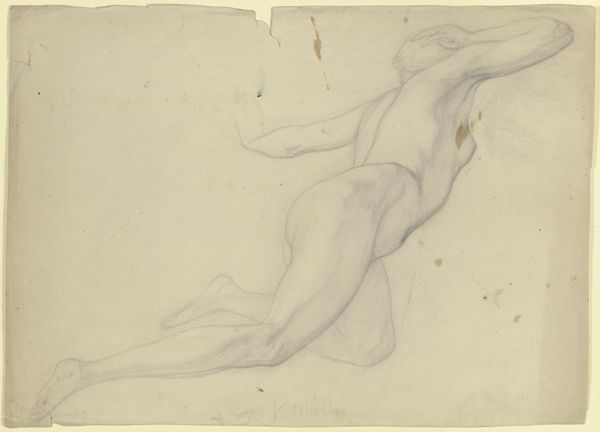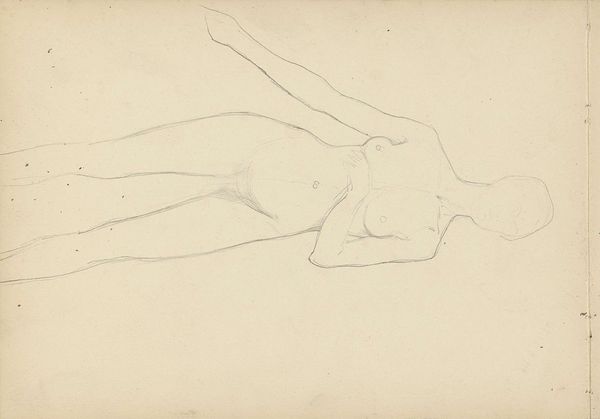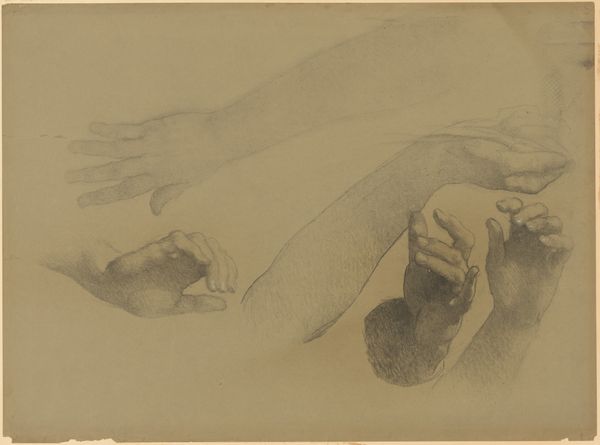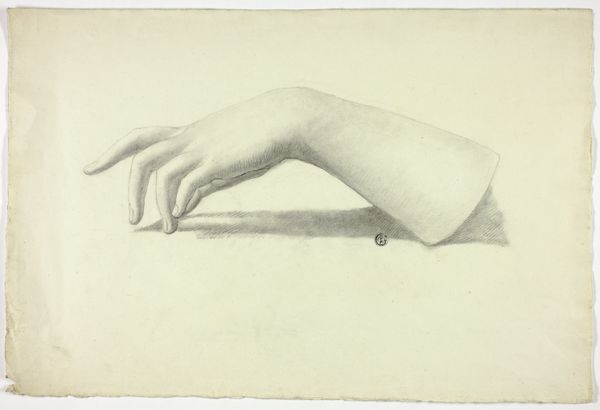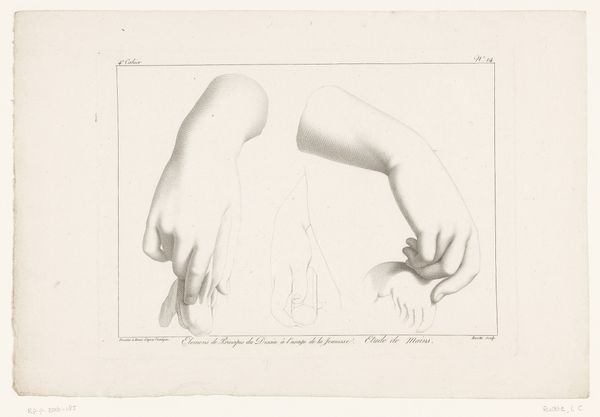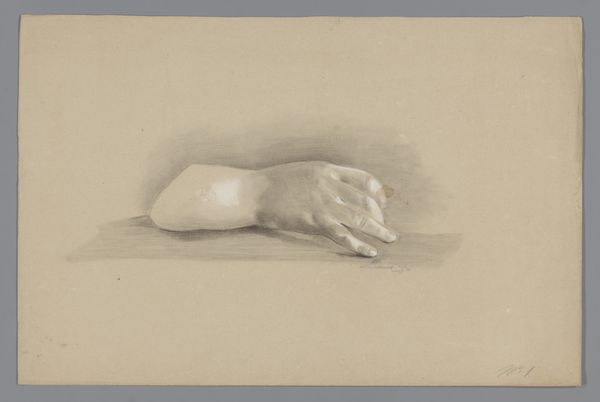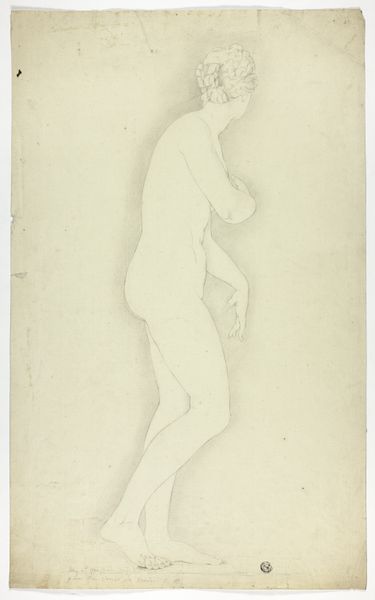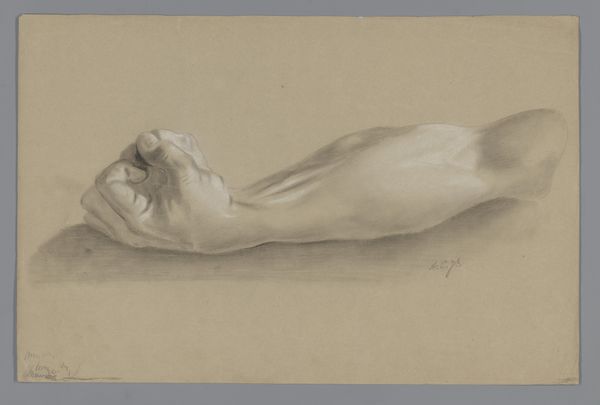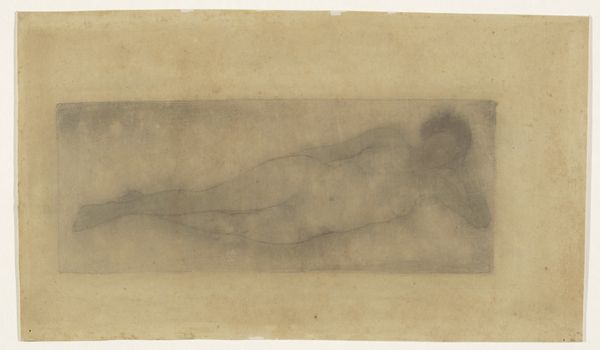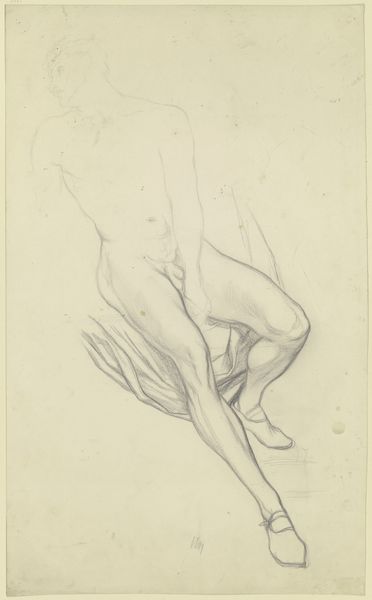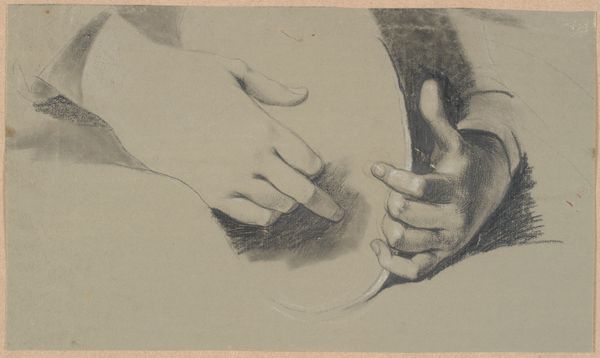
drawing, paper, pencil
#
portrait
#
pencil drawn
#
drawing
#
16_19th-century
#
pencil sketch
#
charcoal drawing
#
figuration
#
paper
#
pencil drawing
#
pencil
#
portrait drawing
#
academic-art
#
nude
#
realism
Copyright: Public Domain
Editor: This drawing, "Liegender weiblicher Akt (Waldnymphe)," or "Reclining Female Nude (Wood Nymph)," by Victor Müller, dates to around 1862. It's pencil on paper, and I’m struck by its subdued quality; the visible grid underneath the figure gives the impression of a study. How would you interpret this work, considering the context in which it was made? Curator: The visible grid is certainly crucial. It indicates the drawing was likely made in preparation for a larger painting. Think about academic training at the time – the relentless practice, the copying of classical forms. Müller is participating in that process but, importantly, also revealing it. Editor: So you're saying the drawing isn't necessarily intended as a finished piece? It shows the labor involved in art creation? Curator: Exactly! And who is doing the labor here? We can imagine Müller, but also the model. Where does she come from? What was she paid? The classical title "Wood Nymph" tries to elevate it, but the gritty reality of the studio resists that idealization. Look at the specific way Müller uses pencil and paper -- cheap materials that enabled wider accessibility. What does that signify? Editor: That’s fascinating, the material reality brings to the fore aspects we typically overlook, the means of art production... Almost like peeling back the layers of mythology and exposing the day-to-day work behind it. The academic pretense belies this rather raw underbelly of making, using ordinary supplies and depicting an actual human being doing physical labor. It's about deconstructing rather than glorifying the nude, really. Curator: Precisely. I'm glad you picked up on that; this wasn’t a godlike nymph so much as it was an exploration of a social performance, with attention placed not on timeless beauty but on a body that existed, and the social transactions inherent in artmaking during that era. Editor: I see the work now as much more than an academic exercise. Thanks to the materials and your perspective, it feels less like a polished statement and more like a crucial act of revealing the messy truth of how art gets made. Curator: Yes. Every visible mark, every line matters, reflecting both aesthetic and material realities.
Comments
No comments
Be the first to comment and join the conversation on the ultimate creative platform.
